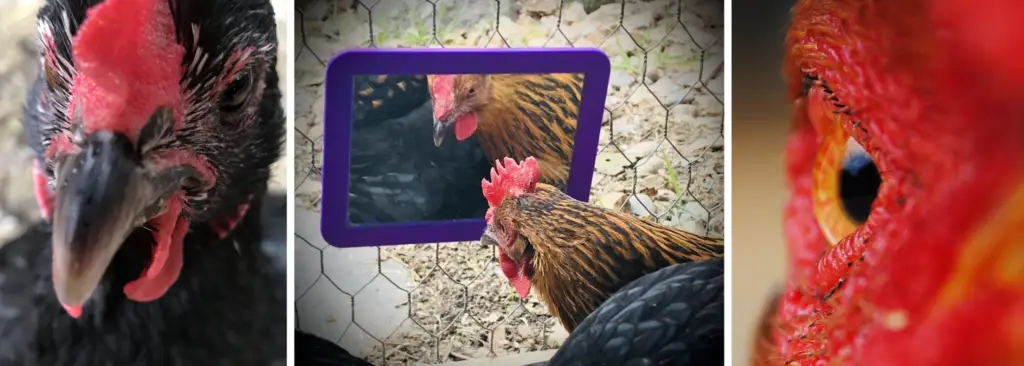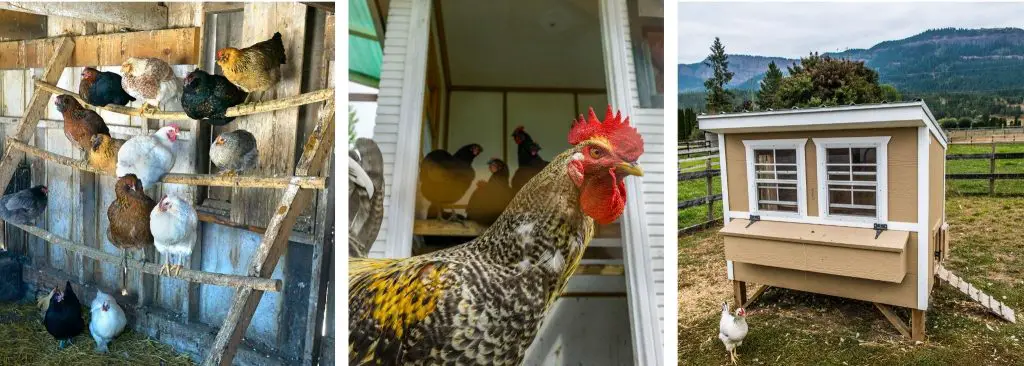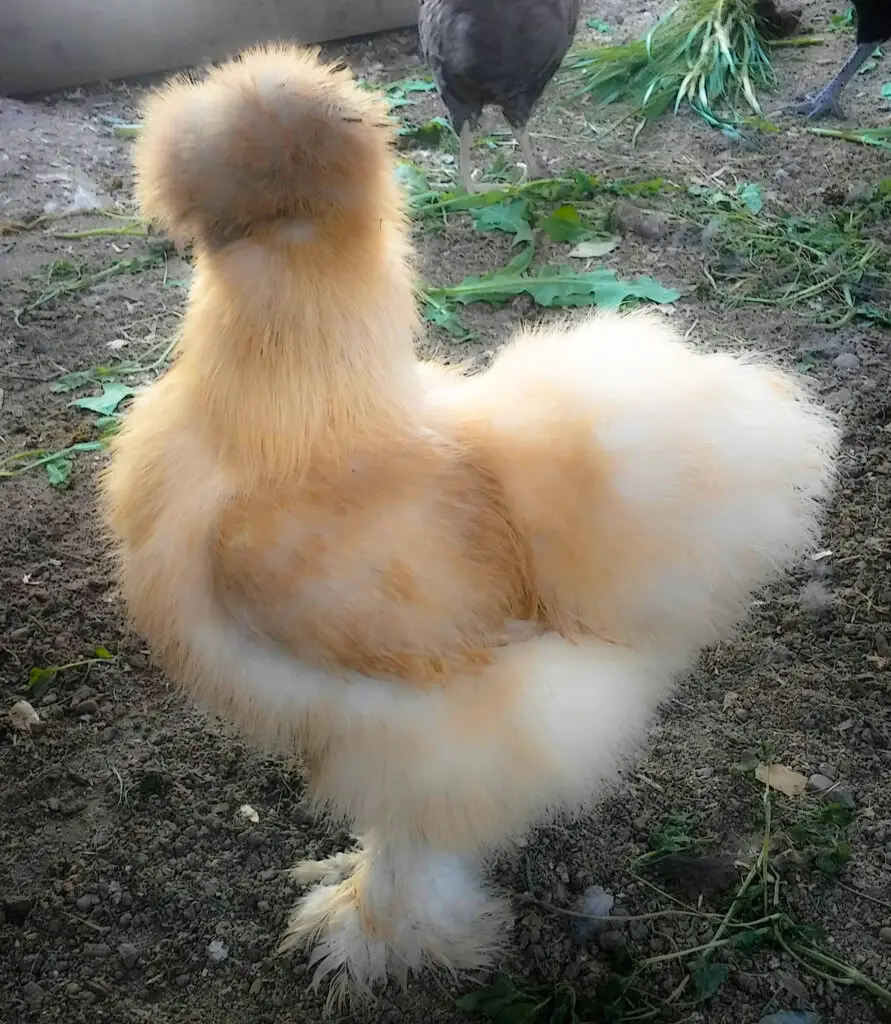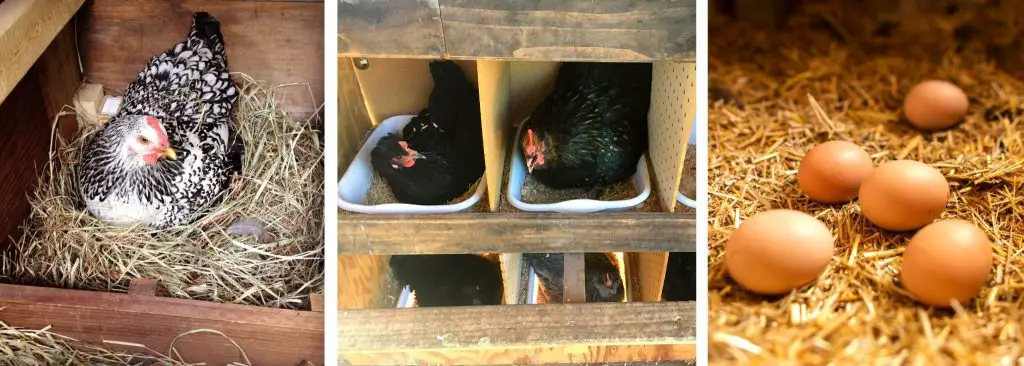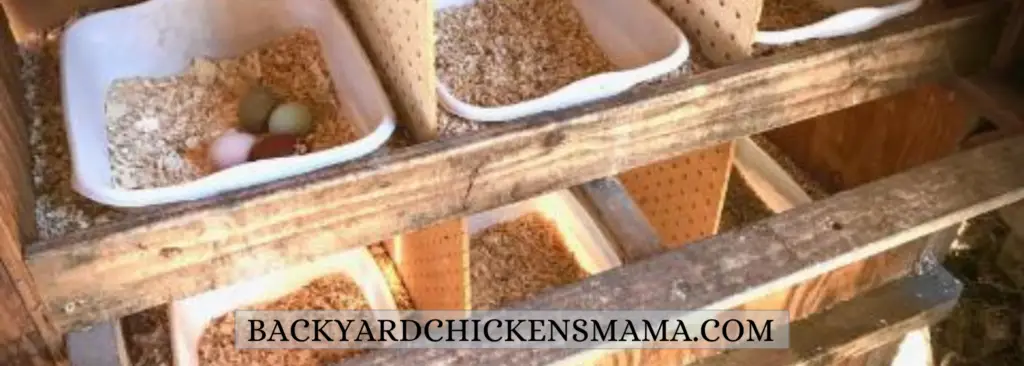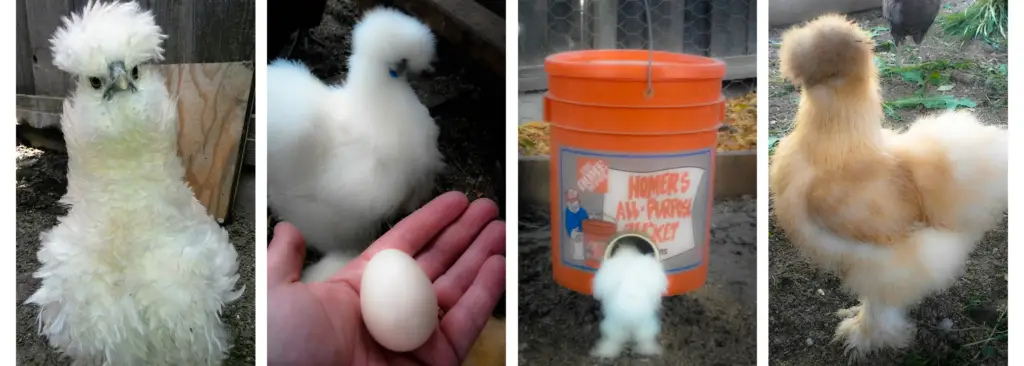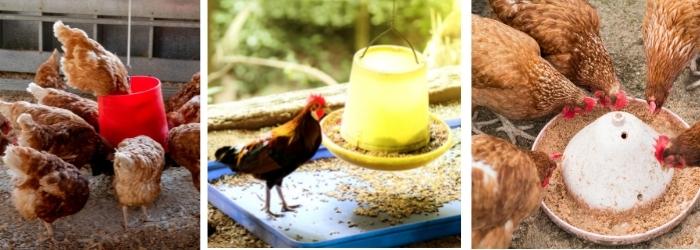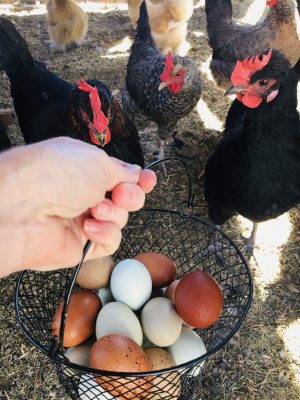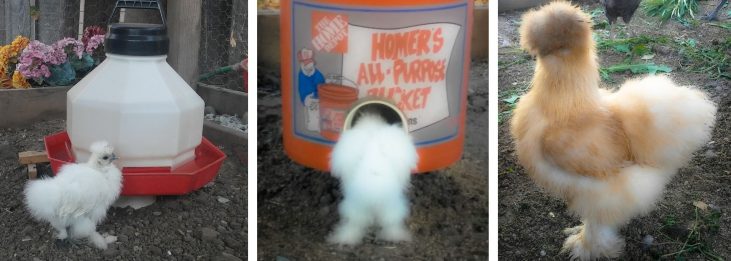
Silkie chickens are unlike the typical chicken and have special needs when it comes to setting up a chicken coop for them. There are 5 big differences to take into consideration when setting up or building a chicken coop for Silkies. Accommodating your Silkies needs will ensure their health, safety and well being.
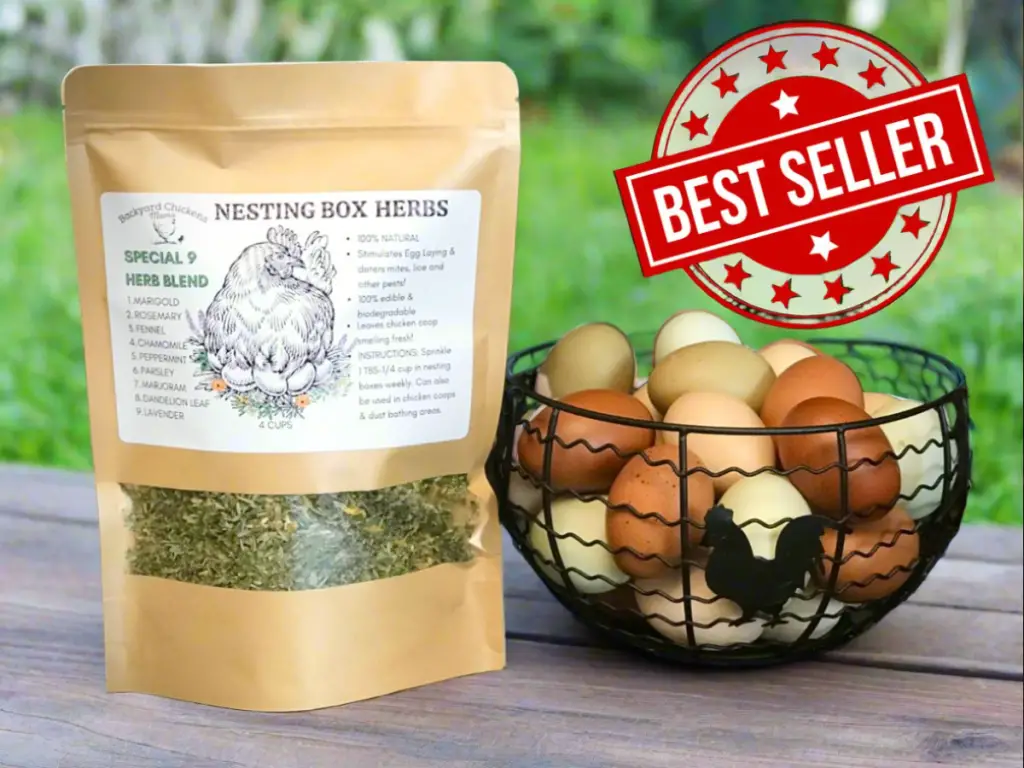
Increases egg laying naturally.
- Improves chicken health.
- Deters parasites: mites, lice, fleas, flies & rodents.
- On SALE!
- SHOP NOW
1. How to Protect Silkies from Chicken Predators
Because Silkie chickens cannot fly and have crest feathers often impeding their vision, extra precautions should be taken to protect them from chicken predators.
| TIPS TO PROTECT SILKIES FROM CHICKEN PREDATORS | |
|---|---|
| 1 | DON’T LET SILKIES FREE RANGE UNATTENDED |
| 2 | USE HAWK NETTING ABOVE CHICKEN RUN |
| 3 | ROUTINELY TRIM FEATHERS AROUND SILKIES EYES |
| 4 | PROVIDE LOWER ROOSTS SO SILKIES DON’T LAY ON THE FLOOR AT NIGHT (RATS AND MICE LESS LIKELY TO NIBBLE AT THEIR FEET.) |
| 5 | GET A ROOSTER TO HELP PROTECT AND ALERT YOUR SILKIES OF PREDATORS |
| 6 | GET A LIVESTOCK DOG TO PROTECT AND ALERT YOUR SILKIES OF PREDATORS |
Why Can’t Silkies Fly?
Silkies do not have the same feather structure as regular chickens do. Most chickens have “barbed” feathers, but most Silkie varieties have feathers without barbs, giving them a fur-like appearance and the inability to fly.
Why do Silkies Have Poor Eyesight?
A silkie chickens eyesight is just as good as any other chicken, which is much better than even a humans eyesight. They see more colors than we do and have a larger field of vision.
The problem that silkie chickens have is that their crest of feathers usually grows and impedes its eyesight.
This makes them vulnerable to predator attack. They are less likely to see predators and are much easier for hawks, raccoons, opossums, fox, bobcat and many others to catch. (This can be an advantage to humans because they are easier to catch and hold!)
2. Do Silkies Need Roosting Bars?
Silkie chickens should be provided with low roosting bars at around 12″ height. This will make them feel safer from predator attack in the night, keep them warmer and help to protect them from contracting parasites.
Setting Up Roosting Bars for Silkie Chickens
If you own a flock of chickens and have Silkies, it is always best to provide lower roosting bars for them. Because Silkies can’t fly, they have a more difficult time getting onto the higher roosts.
If they have a hard time finding a roost that they can get onto, they will just sleep on the floor.
I have raised Silkies with many other breeds of chickens and always provide a lower roost at 12″. I have found that some will jump from roost to roost until they are at the highest roost of 4′.
Then there are others that prefer to sleep on the floor. I always try to encourage these to roost on the lowest roost. I do this by removing them from the floor in the night and placing them on a low roost.
Most of the time this will work, but every so often you may have a stubborn one that is determined to sleep on the floor or in a nesting box.
3. Do Silkie Chickens Need Nesting Boxes?
Silkie chickens are just like any other breed of chicken and should to be provided with a nesting box to lay eggs in. If you don’t provide her with a nesting box, she will seek out secluded areas to lay her eggs and you may find yourself going on an egg hunt to find her eggs.
Silkie Nesting Box Size and Height
Size: The typical Silkie chicken is a bantam chicken breed, which is smaller than the average chicken and do not require as large of a nesting box. 10″L x 10″W x 10″H will be sufficient for any bantam breed to lay in.
Height: Because Silkies cannot fly, provide a set of nesting boxes that are low to the ground, 1 foot, or provide a 12″ high roosting bar for them to jump up onto to get into a nesting box.
4. How to Protect Silkie Chickens form Cold
Can Silkies Handle Cold Weather?
As long as Silkies are housed with other chickens (for warmth) and are provided shelter from wind, rain and snow they can handle freezing temperatures.
Chickens roost close together at night and help to keep each other warm.
Most chickens have barbed feathers. It is the barbed feathers that help to trap air between the feathers and skin. Silkies do not have barbed feathers. This is why their feathers appear like “fluff.”
Is it Bad for Silkies to Get Wet?
Unlike most chickens, Silkie feathers are not water repellent. During cold weather it is not good for Silkies to get wet. Make sure you provide shelter from harsh weather elements, especially during the cold winter months.
5. Proper Feed and Water Placement for Silkie Chickens
Silkies are smaller than the average size chicken. Make it a point to observe your flock when eating and drinking and make sure that your smallest one’s are able to reach.
Place Silkie chicken food and watering stations lower to the ground, at the smallest chickens shoulder level.
Should You Put Food and Water In the Coop?
Silkie chickens are no different than other breeds of chickens when it comes to having food and water inside the chickens coop. Don’t do it.
Keeping food and water inside the chicken coop, is an invitation to predators. It also puts your chickens at increased risk of developing diseases or contracting parasites.
Water in the coop inevitably always spills and adds moisture to the air. Bacteria breeds in moisture.
Moisture in a cold coop also predisposes chickens to develop frost bite on their comb, wattles and feet.
CONCLUSION: 5 Big Differences: Best Chicken Coop Setup for Silkies
There are 5 big differences in how you set up your chicken coop for Silkie Chickens.
- Protecting Silkies from Chicken Predators is Different
- Roosting Bar Height for Silkies is Different
- Nesting Box Requirements are Different for Silkies
- Protecting Silkies from Cold and Getting Wet is Different
- Food and Water Placement for Silkie Chickens is Different
By accommodating all of your Silkies needs, you are likely to have a happy, healthy and secure flock of Silkies. They will show you their appreciation by providing you with about 2-3 small (adorable), off-white eggs a week!
Best Chicken Coop Setup for Silkies- 5 Big Differences– https://www.backyardchickensmama.com/best-chicken-coop-setup-for-silkies/

